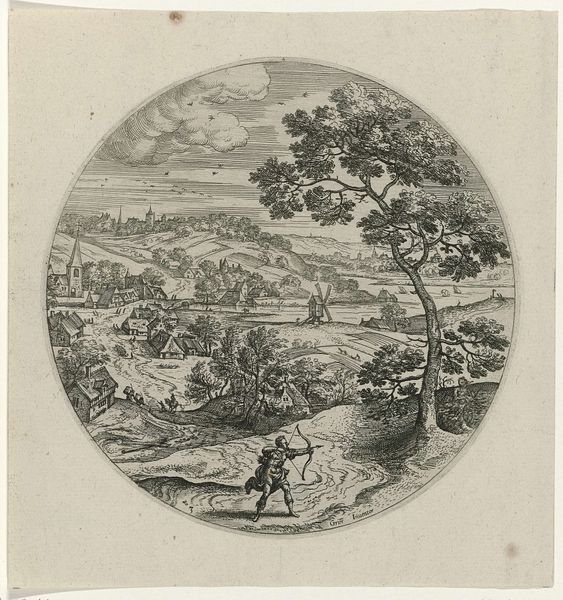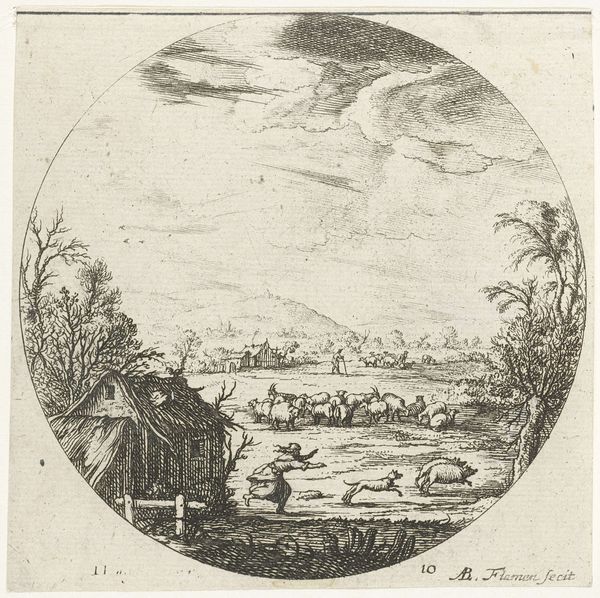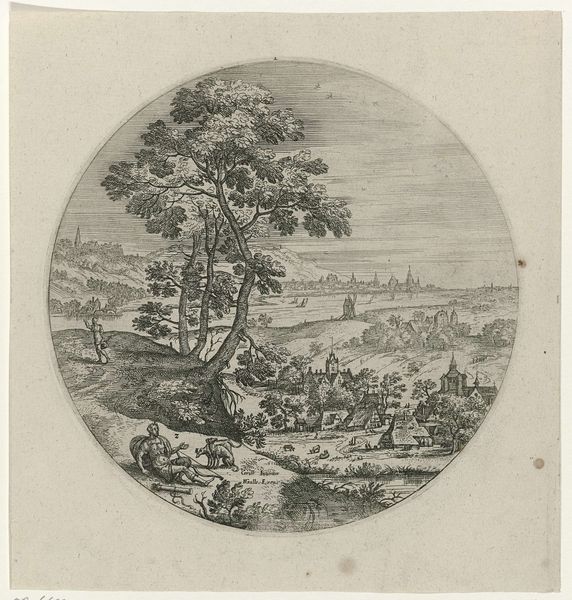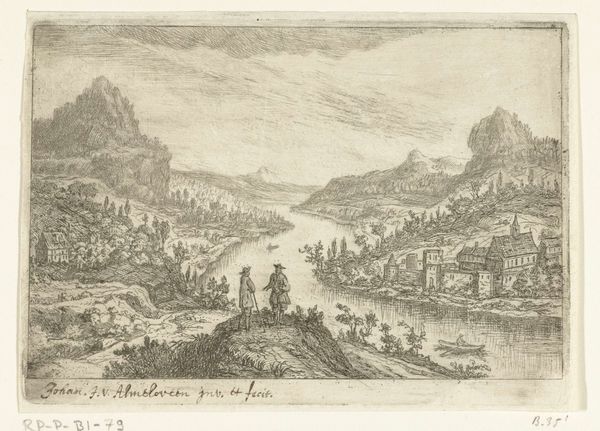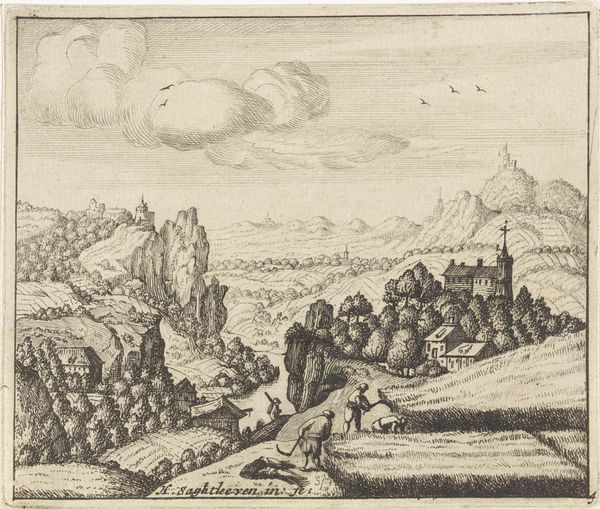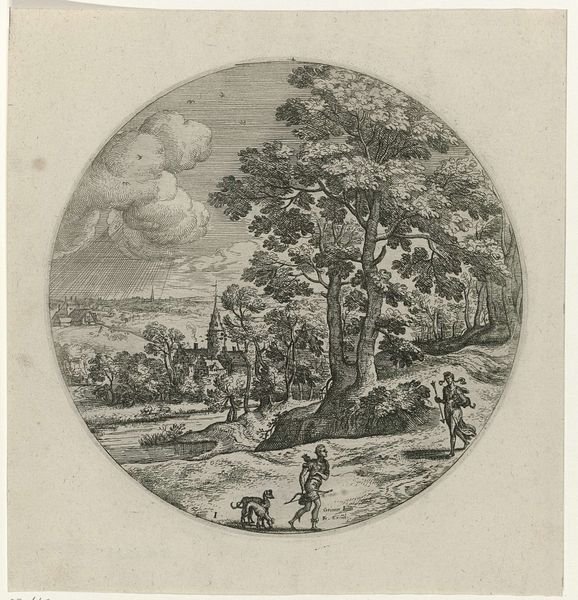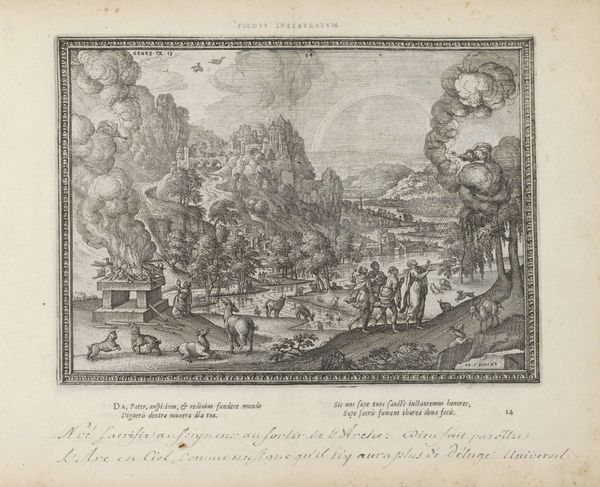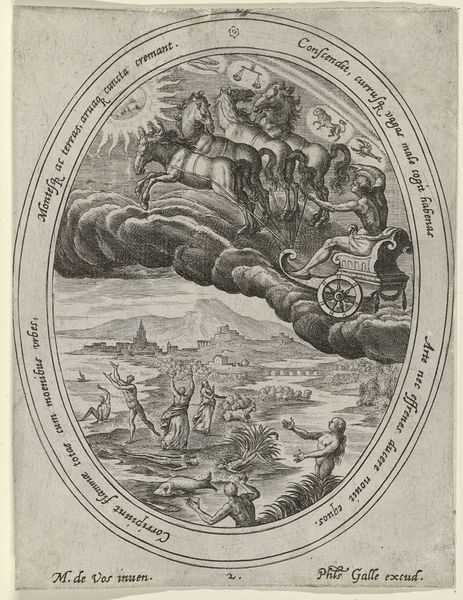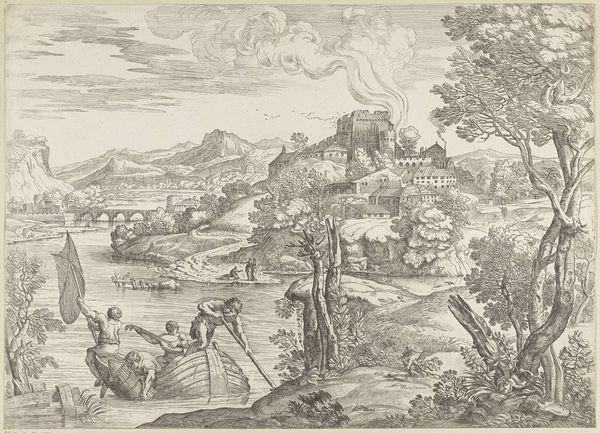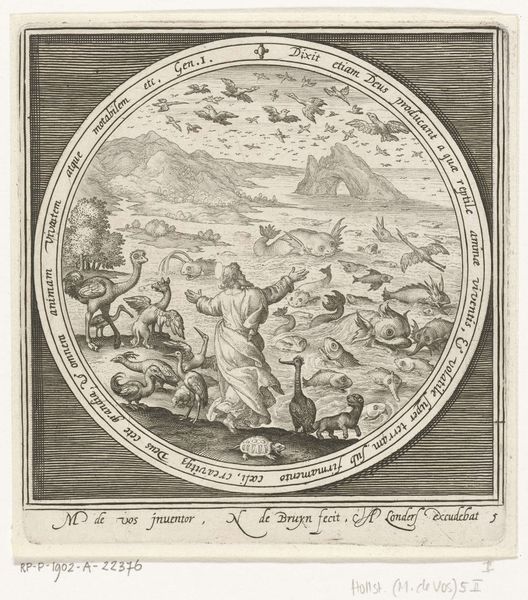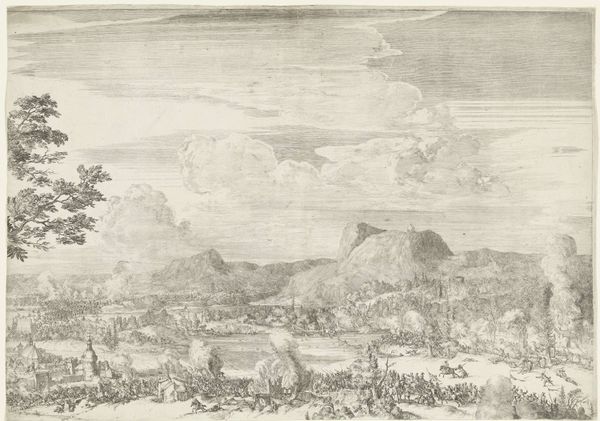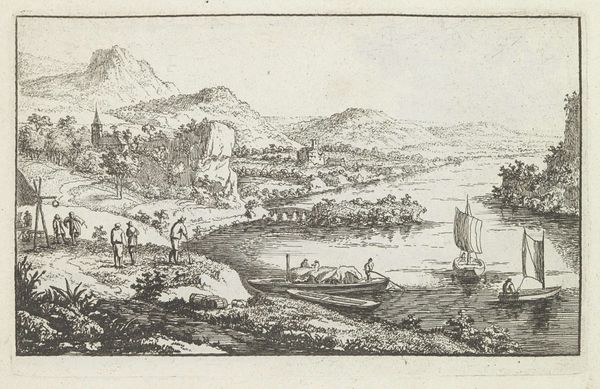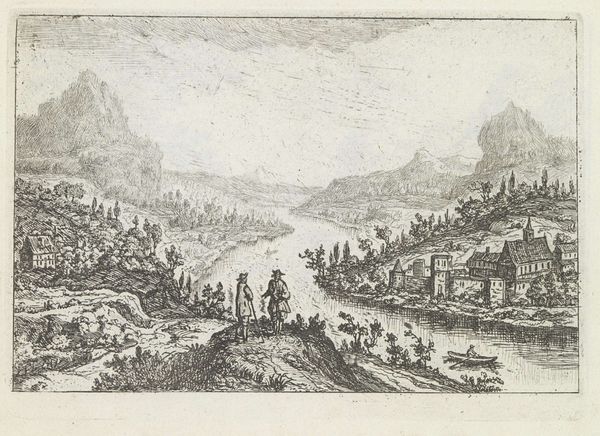
print, ink, engraving
# print
#
pen sketch
#
pencil sketch
#
old engraving style
#
landscape
#
mannerism
#
ink
#
ink drawing experimentation
#
line
#
pen work
#
genre-painting
#
engraving
Copyright: Rijks Museum: Open Domain
Curator: Let's discuss "Procris Dies in the Arms of Cephalus." This engraving, likely created between 1547 and 1612, is attributed to Philips Galle. Editor: It's remarkable how much detail Galle fits into this circular composition! My eye is immediately drawn to the lower right corner where the figures are framed. It's surprisingly serene, considering the subject. Curator: That juxtaposition is key. The print illustrates a scene from Ovid’s Metamorphoses, highlighting the tragic intersection of love, jealousy, and mistaken identity. Procris’ death isn't merely a personal tragedy. Consider the historical context—this work reflects Mannerist sensibilities, exploring idealized landscapes, human drama, and perhaps cautionary tales regarding marital relationships within a patriarchal society. Editor: Structurally, that circular format reinforces the idea of a contained, perhaps even fated, narrative. The lines are incredibly precise, lending a crispness to the entire scene. It draws my focus, circling me back, to the initial emotional impression I perceived with the human form being a place of safety. Curator: Notice how the broader landscape functions in relation to that intimate moment. It places their drama within a wider world, one shaped by power structures, wealth, and the prevailing ideologies of the era. The details aren’t arbitrary; each element subtly reinforces a world that shaped the conditions leading to Procris's demise. Editor: So, while seemingly detached, that background serves as more than just scenic filler. I find myself focusing on that town on the hill, for example, thinking about what part it serves overall within this piece, what emotions it stirs. Curator: Precisely! To analyze the town’s implications and more, think of how these images circulated. Prints such as this allowed for stories and their embedded messages to reach a wider audience. They were instruments for disseminating moral and political ideas and Galle would have understood this cultural and social need for moral depiction. Editor: Thank you. After looking more deeply into Galle’s print and the themes, I understand that there's a powerful visual complexity in those fine lines, after all.
Comments
No comments
Be the first to comment and join the conversation on the ultimate creative platform.
